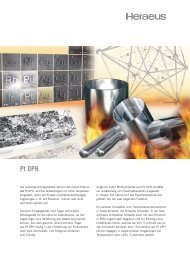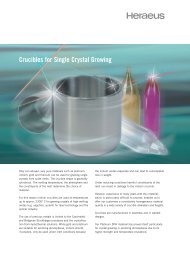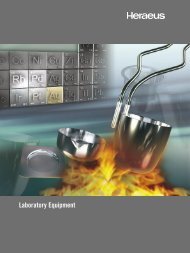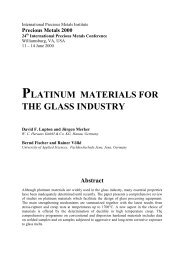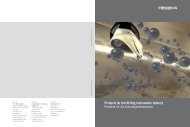Design and Manufacture of Bushings for Glass Fibre Production
Design and Manufacture of Bushings for Glass Fibre Production
Design and Manufacture of Bushings for Glass Fibre Production
You also want an ePaper? Increase the reach of your titles
YUMPU automatically turns print PDFs into web optimized ePapers that Google loves.
<strong>Design</strong> <strong>and</strong> <strong>Manufacture</strong> <strong>of</strong> <strong>Bushings</strong> <strong>for</strong> <strong>Glass</strong> <strong>Fibre</strong> <strong>Production</strong><br />
Figure 4a: Schematic design.<br />
Figure 4: Bushing with pressed tips.<br />
Figure 4b: Typical example.<br />
The main disadvantages <strong>of</strong> designs with pressed tips are the relatively high tooling<br />
cost <strong>and</strong> the time delay if new tooling has to be manufactured. Furthermore, each tipplate<br />
design requires its own tooling. The thickness tolerances that can be achieved<br />
<strong>for</strong> the tip-plate are less precise than <strong>for</strong> the rolled sheet used in making tip-plates<br />
with welded tips. It is, <strong>of</strong> course, not possible to use different materials <strong>for</strong> tips <strong>and</strong><br />
plate.<br />
<strong>Glass</strong> quality<br />
Table 1 shows typical compositions <strong>of</strong> the main glasses used <strong>for</strong> fibres. Platinum<br />
alloys are used <strong>for</strong> bushings because <strong>of</strong> their excellent oxidation <strong>and</strong> corrosion<br />
resistance. However, they are susceptible to attack by “platinum poisons” –<br />
elements which <strong>for</strong>m low-melting eutectics or brittle compounds with the platinum. A<br />
number <strong>of</strong> these “poisons” can develop if the glass processing conditions are<br />
insufficiently oxidising. One <strong>of</strong> the best known examples is silicon which <strong>for</strong>ms a<br />
eutectic with platinum melting at only 830°C. Less well known is the reaction <strong>of</strong> the<br />
rhodium constituent <strong>of</strong> Pt-Rh alloys with sulphur to <strong>for</strong>m a eutectic which melts at<br />
925°C. Under sufficiently reducing conditions, even the highly stable oxide Al 2 O 3 can<br />
be reduced at the surface <strong>of</strong> platinum: the aluminium diffuses into the platinum<br />
causing embrittlement. The insufficiently oxidising conditions may be the result <strong>of</strong><br />
carbon impurities in the raw materials, incorrect adjustment <strong>of</strong> the oxygen potential in<br />
the furnace atmosphere or unintentional galvanic effects in the electrical heating<br />
system.<br />
– 5 –



